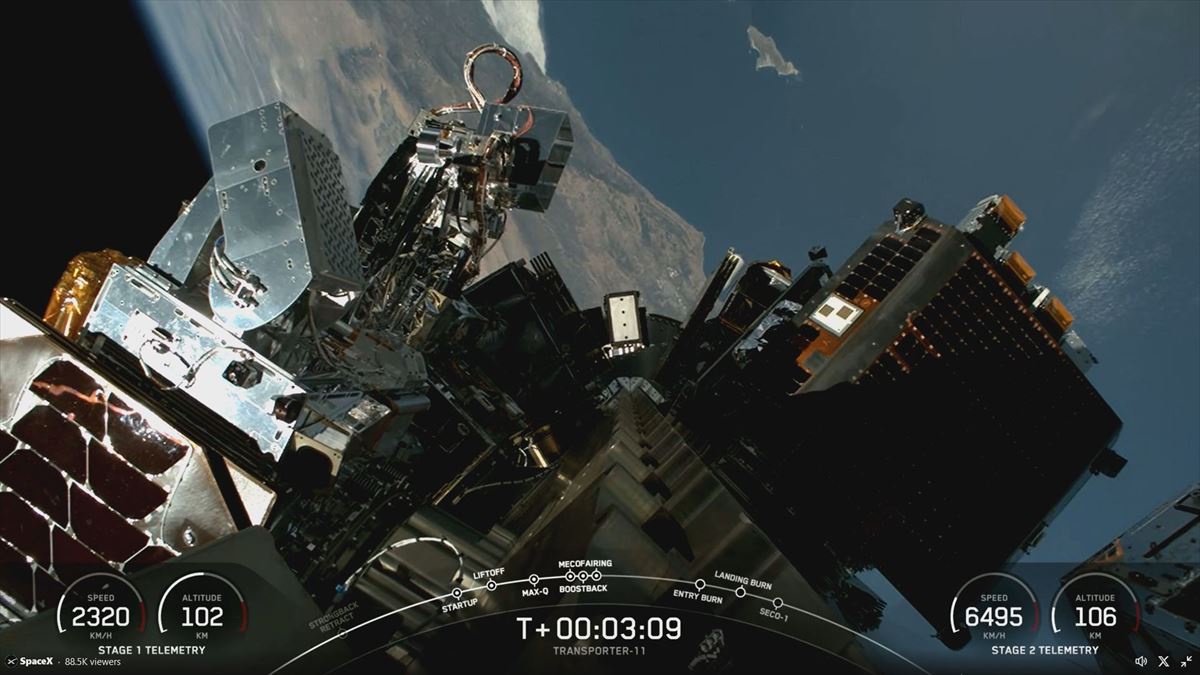The satellite launch delay has forced the team to recalculate the data to establish the connection, which is typically delayed by up to two weeks. The satellite lifted off this Friday on Space X’s Falcon 9 rocket.
The company Alava AVS (Value Added Solutions) has confirmed to the EITB that the first attempt to connect to the LUR-1 satellite, which was launched from California (USA) last Friday and was carried out last midnight, failed. Therefore, they have scheduled two more attempts for this afternoon: at 12:39 and at 24:00. :14 hours
From AVS they explained that the delay in the launch has caused them to recalculate the data to establish the connection with the device, and they have added that it is common for the connection not to be established on the first attempt, and that in some cases it can take up to two weeks to achieve this.
LUR-1, the first satellite to be designed and developed entirely in Euskal Herria, specifically at the company’s facilities in the Álava Technology Park was launched into orbit yesterday.
AVS Space Director, Christina Ortegasaid before launch that they expected to receive the first signal from the rocket about an hour and twenty minutes after launch.
The satellite left with the rocket Falcon 9 of the company SpaceXfounded by entrepreneur Elon Musk. The launch took place at the US Space Force base in Vandenberg (California).
Minutes after launch, the rocket and satellite separated. Once this phase is complete, it will orbit at a distance of approximately 515 kilometers above the Earth’s surface.

LUR-1 is conceived as a microsatellite 57 kilo which incorporates antennas of different bands (UHF, S and X), a deployable arm and solar panels. More than a thousand days of work and 8 million euros were invested in the design and production, of which the 40% comes from public funds.
The satellite, which is orbiting at a speed of 7 kilometers per secondis designed for a lifespan of five years. Once this period has elapsed, it will be captured from its orbit and then re-entered into the atmosphere, where it will disintegrate.
High-definition images and durability
All these technological developments are intended to capture high-definition images of the Earth, although the focus of the mission is in principle on the geography of the Basque Country, to contemplate the evolution of the coastline, analyze pests and rivers or to study the distribution of crops, among other things.
The device is built into the LUR-1 satellite MICEalso developed by the company Alava for the ESA (European Space Agency).
MICE is the device that will be installed on all Copernicus programme satellites in preparation for their deorbitation when they are no longer operational or for use at the end of their life. The aim is to demonstrate the possibility of getting rid of space debris and thus achieving a more sustainable space.
The space sector generates around 800 million euros annually in the Basque Autonomous Community, employs around 5,000 professionals and accounts for 5.7% of GDP.
Source: EITB
I’m Wayne Wickman, a professional journalist and author for Today Times Live. My specialty is covering global news and current events, offering readers a unique perspective on the world’s most pressing issues. I’m passionate about storytelling and helping people stay informed on the goings-on of our planet.



